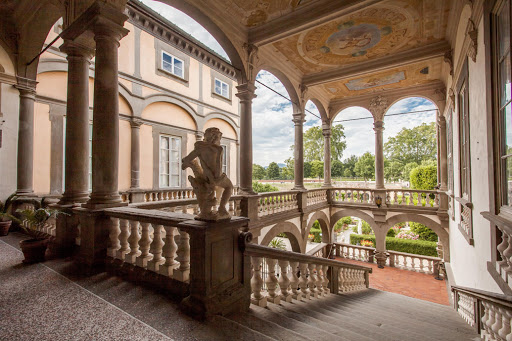
Address: via degli Asili 33, 55100, Lucca
The Palace and Garden are open from April to November, daily from 10 a.m. to 6 p.m.
The garden appears at first glance as a hortus conclusus, while maintaining a constant relationship with both the walls and the tree-lined promenade and the urban context.
In the second half of the seventeenth century the Moriconi family began the construction of the palace and initiated the creation of the garden. At the end of the century the Controni family, silk merchants who took over from the Moriconi, enriched the complex with the construction of the splendid external staircase, whose authorship is disputed between Filippo Juvarra and Domenico Martinelli, a scenic filter between the palace and the garden.
The scenic early 18th-century garden is attributed to Juvarra. The central section is arranged on the perspective axis identified by statues of mythological gods and heroes. On either side of the entrance, in two niches, are statues of the “Magna Mater” Cybele and Hercules, guardian of the garden of the Hesperides. In the center is the large octagonal pool with the Four Elements (Vulcan is symbolic of Fire, Mercury of Air, Dionysus of Earth, Ocean of Water). In the background, along the line of the walls, is the large Limonaia with its elegant brick elevation punctuated by large windows alternating with laurel hedges. On the top balustrade two lions (attributes of Cybele) flank the basilisk, emblem of the Controni. The other sector of the garden consists of large lawn areas with numerous lemon basins, some of which bear the date 1843. On either side of the formal garden are tall topiary hedges of laurel and boxwood and two bamboo groves of nineteenth-century origin, when the property was purchased by Felice Pfanner, a German-born industrialist who in 1856 planted a brewery there that operated until 1929.
FOR MORE INFORMATION: www.gardenrouteitalia.it







